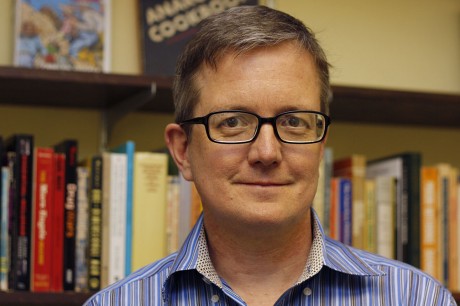
On the evening of Thursday, April 4, Aaron Delwiche, assistant professor of communication, and Jennifer Henderson, associate professor and chair of communication, spoke to students at Winston School San Antonio about social media and cyberbullying. After much research and publishing a book on the subject, both Delwiche and Henderson are working to address the hardships and culture of cyberbullying.
Q: Why do you think it is important to talk to these kids about cyber bullying and social media?
A: We were invited to speak on the topic of cyberbullying and social media. We wanted to acknowledge the very real issue of cyberbullying, but we also wanted to emphasize the many positive ways that social media can be used to counteract bullying. In fact, we believe that emerging media platforms have far more to offer as forces for education, creativity and social support.
Q: Why are you interested in speaking about and studying the topics of cyber bullying and social media use?
A: Dr. Henderson and I recently published a book on the ways that emerging media are being used to nurture collaboration. In the Participatory Cultures Handbook (2013), we argue that our media landscape has undergone a seismic shift. Digital technology has fostered the rise of “participatory cultures,” in which knowledge is originated, created, distributed and evaluated in radically new ways.
Q: How prevalent is cyberbullying?
A: It is hard to answer this question with certainty. We know that bullying was a problem before the advent of the Internet, and there is plenty of anecdotal evidence which suggests that bullies are now active in both online and offline spaces. However, many of the scary statistics on this topic should be taken with a grain of salt. It is enough to know that cyberbullying exists.
Q: How can people prevent cyber bullying from occuring?
A: On a broader social level, people of all ages can combat bullying by using social networks to propagate positive and esteem-enhancing messages. The “It Gets Better” project is a terrific example. Created by Dan Savage and his husband Terry Miller in 2010 as a response to anti-gay bullying, the project has inspired more than 50,000 user-created videos encouraging bullied kids to remember that things will eventually get better. This is just one example; there are many others.
Overall, Dr. Henderson and I argued that digital media and social networks are a far greater force for good. As one participant said during the Q&A discussion last week, “hate and negativity are finite and limited, but love and curiosity are infinite and ever-expanding.” The Internet might be used by some bullies to disseminate hate, but these networks are also used to propagate love, support and tolerance.






